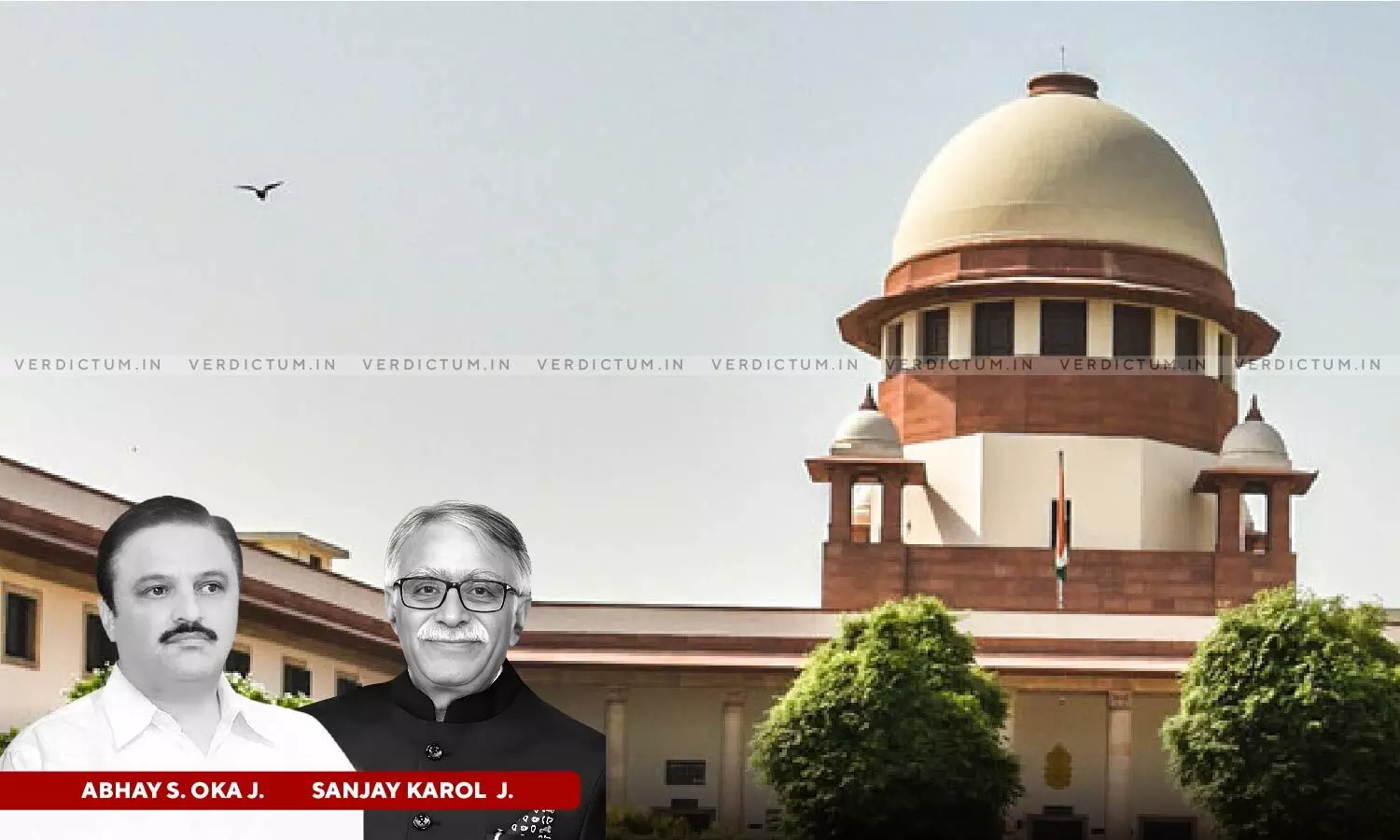
Supreme Court Summarizes Principles For Examining Admissibility Of Secondary Evidence
 |
|The Supreme Court recently summarised the principles relevant to the examination of the admissibility of Secondary evidence under Sections 63 and 65 of the Indian Evidence Act (IEA).
The court was considering an appeal in which the issue raised was whether the bar of admissibility under Section 35 of the Indian Stamp Act (Act) would be applicable to a copy of an unstamped sale agreement dated February 4, 1988.
The Bench comprising Justice Abhay S. Oka and Justice Sanjay Karol observed that the sale agreement was not liable for stamp duty. Therefore, the bar of section 35 of the Indian Stamp Act (Act) would not apply to the admissibility of the copy of the sale agreement.
Advocate Chetan Pathak appeared for the Appellant (Plaintiff) and Additional Solicitor General K M Nataraj appeared for the Respondent (Defendant).
The Plaintiff and Defendant entered into an agreement for the sale of a property. Subsequently, a dispute arose, leading Plaintiff, who claimed to be put in possession by Defendant, to file a suit for specific performance. Initially, the Trial Court permitted the presentation of a copy of the agreement as secondary evidence under Section 65 of the Indian Evidence Act (IEA). However, allowing the review petition filed by Defendant, the Trial Court noted that secondary evidence of the agreement to sell could not be admitted due to inadequate stamping, invoking Section 35 of the Indian Stamp Act (Act). The High Court endorsed the Trial Court's perspective. Aggrieved, the Plaintiff appealed to the Apex Court.
The Court outlined principles for assessing the admissibility of secondary evidence, emphasizing the importance of presenting primary evidence first. The Court noted that per Section 63 of the IEA, documents are admissible as secondary evidence only in the absence of primary evidence. The Bench noted that if the original document is available, it must be produced and proved according to prescribed methods, and the inferior proof is not acceptable as long as the best evidence is accessible.
Furthermore, the Court observed that a party should make efforts to provide primary evidence, and exceptions allow for secondary evidence when unable to produce the original without fault. The Bench emphasized the need for properly explaining the non-availability of a document for allowing the admission of secondary evidence.
Additionally, the Bench noted that Secondary evidence is permissible when the party cannot produce the original document for reasons not due to default or neglect. Copies produced in the absence of the original can be considered good secondary evidence, but foundational evidence of their authenticity is necessary. Before presenting secondary evidence, the Court noted that the non-production of the original must be explained in a manner consistent with the protocol outlined in the relevant sections.
The Bench observed that mere production and marking of a document as an exhibit by the court do not constitute due proof of its contents; it must be proven following the law. Section 65(a) of the IEA permits secondary evidence when the original document or primary evidence is in the possession of the opposing party or a third party who refuses to produce it, ensuring that the alleged copy is a true copy of the original.
The Court, in this context, noted, “Law requires the best evidence to be given first, that is, primary evidence.
Section 63 of the Evidence Act provides a list of the kinds of documents that can be produced as secondary evidence, which is admissible only in the absence of primary evidence.
If the original document is available, it has to be produced and proved in the manner prescribed for primary evidence. So long as the best evidence is within the possession or can be produced or can be reached, no inferior proof could be given.
A party must endeavor to adduce primary evidence of the contents, and only in exceptional cases will secondary evidence be admissible. The exceptions are designed to provide relief when a party is genuinely unable to produce the original through no fault of that party.
When the non-availability of a document is sufficiently and properly explained, then the secondary evidence can be allowed.
Secondary evidence could be given when the party cannot produce the original document for any reason not arising from his default or neglect.
When the copies are produced in the absence of the original document, they become good secondary evidence. Still, there must be foundational evidence that the alleged copy is a true copy of the original.
Before producing secondary evidence of the contents of a document, the non-production of the original must be accounted for in a manner that can bring it within one or other of the cases provided for in the section.
Mere production and marking of a document as an exhibit by the Court cannot be held to be due proof of its contents. It has to be proved in accordance with the law.”
The Court referred to the following cases: Neeraj Dutta v State (NCT of Delhi) [Order of December 15 2022], Yashoda v K. Shobha Rani [(2007) 5 SCC 730], M. Chandra v M. Thangamuthu [(2010) 9 SCC 712], Surendra Krishna Roy v Muhammad Syed Ali Matwali Mirza [1935 SCC OnLine PC 56], H. Siddiqui v A. Ramalingam [(2011) 4 SCC 240].
Accordingly, the Court allowed the Appeal and set aside the impugned order.
Cause Title: Vijay v Union Of India & Ors. (2023 INSC 1030)
Click here to read/download Judgment